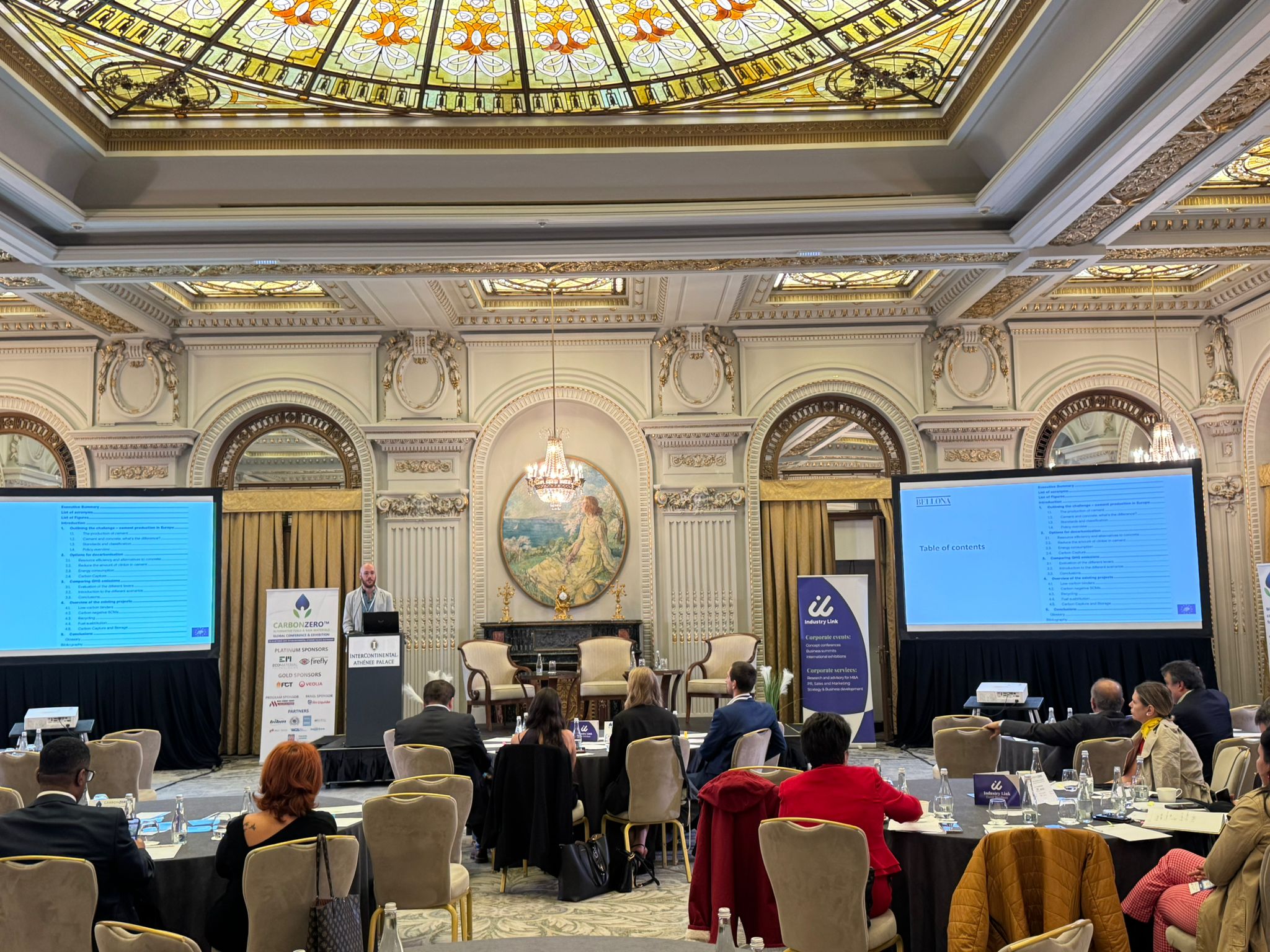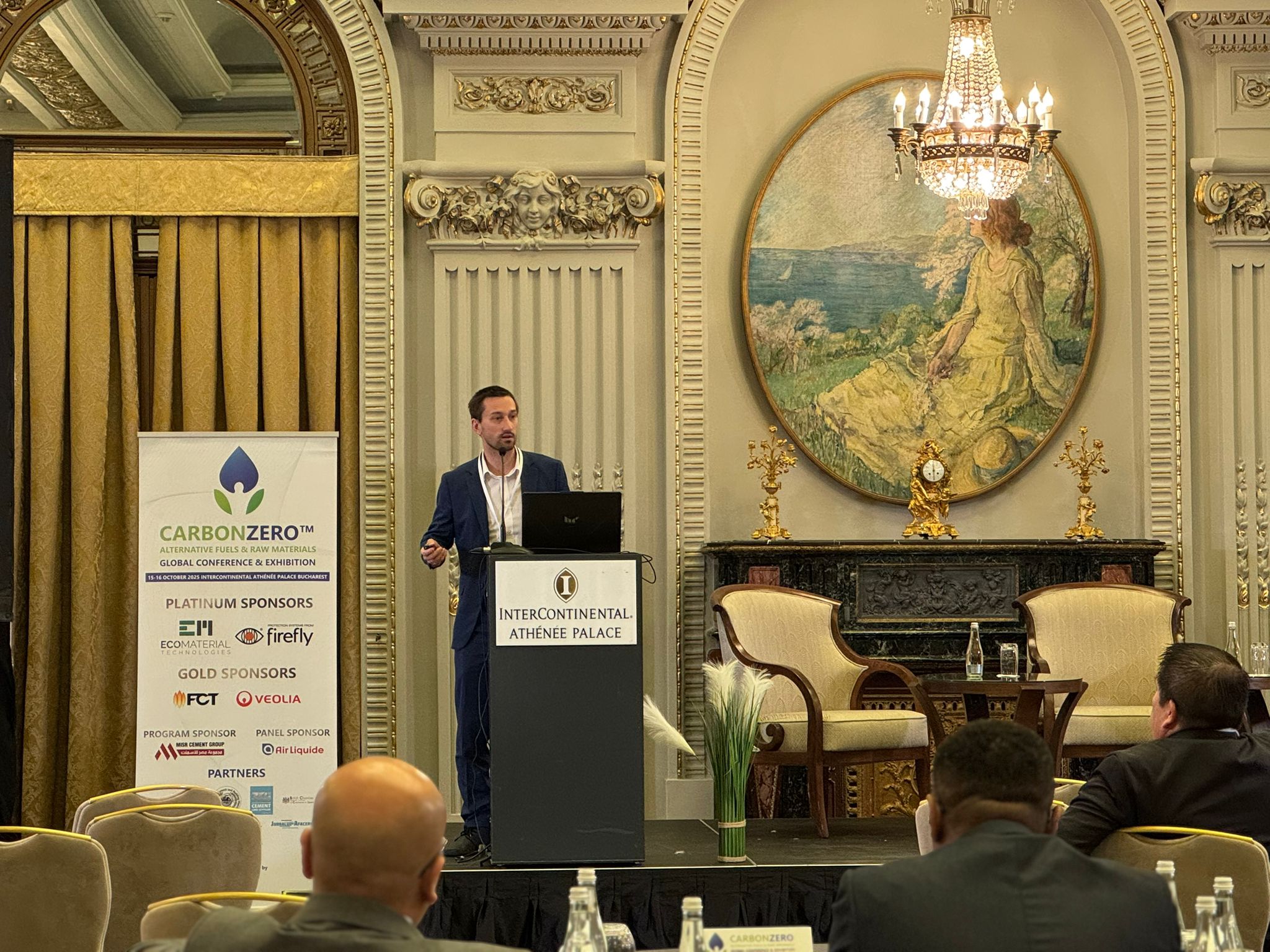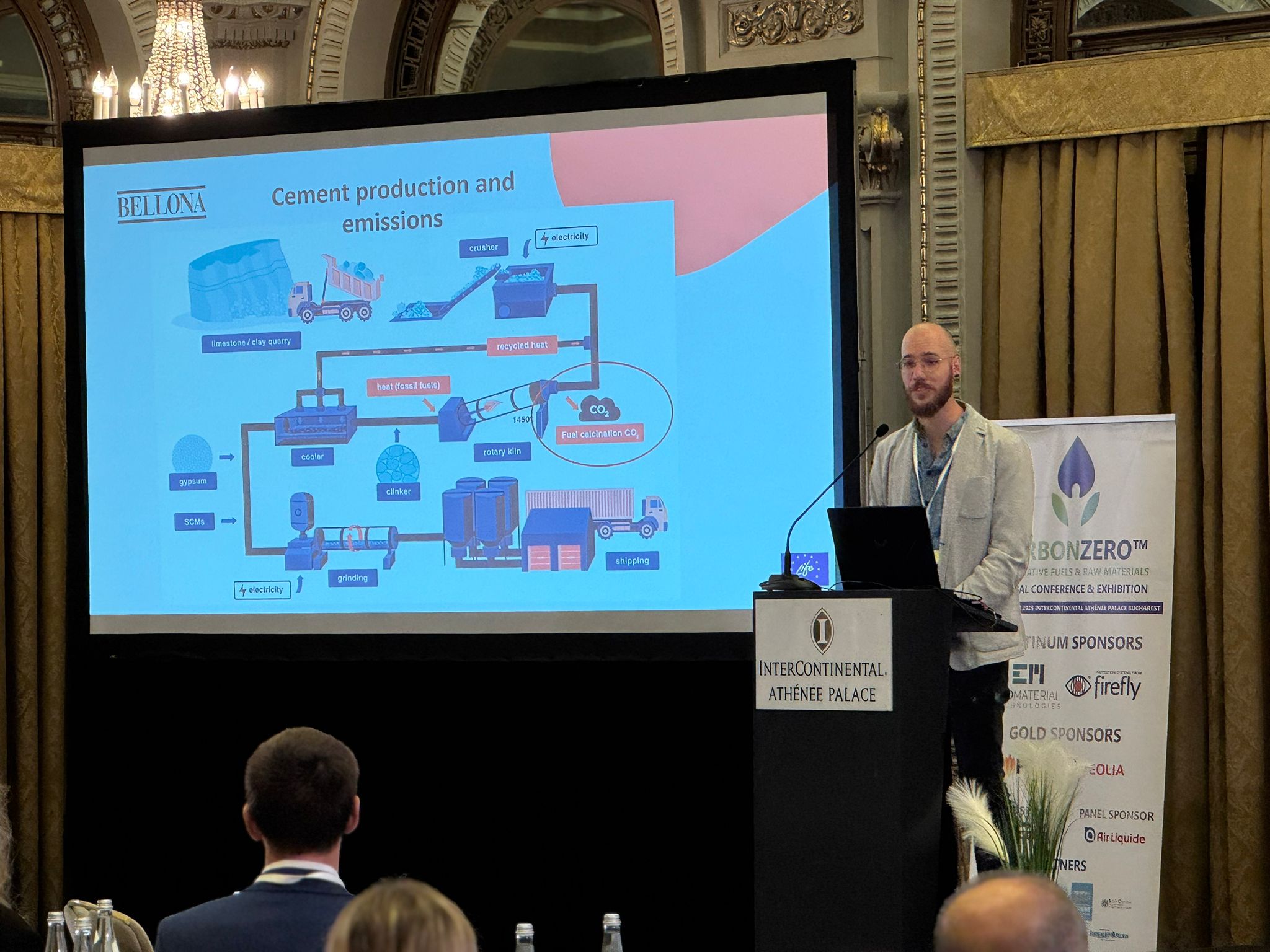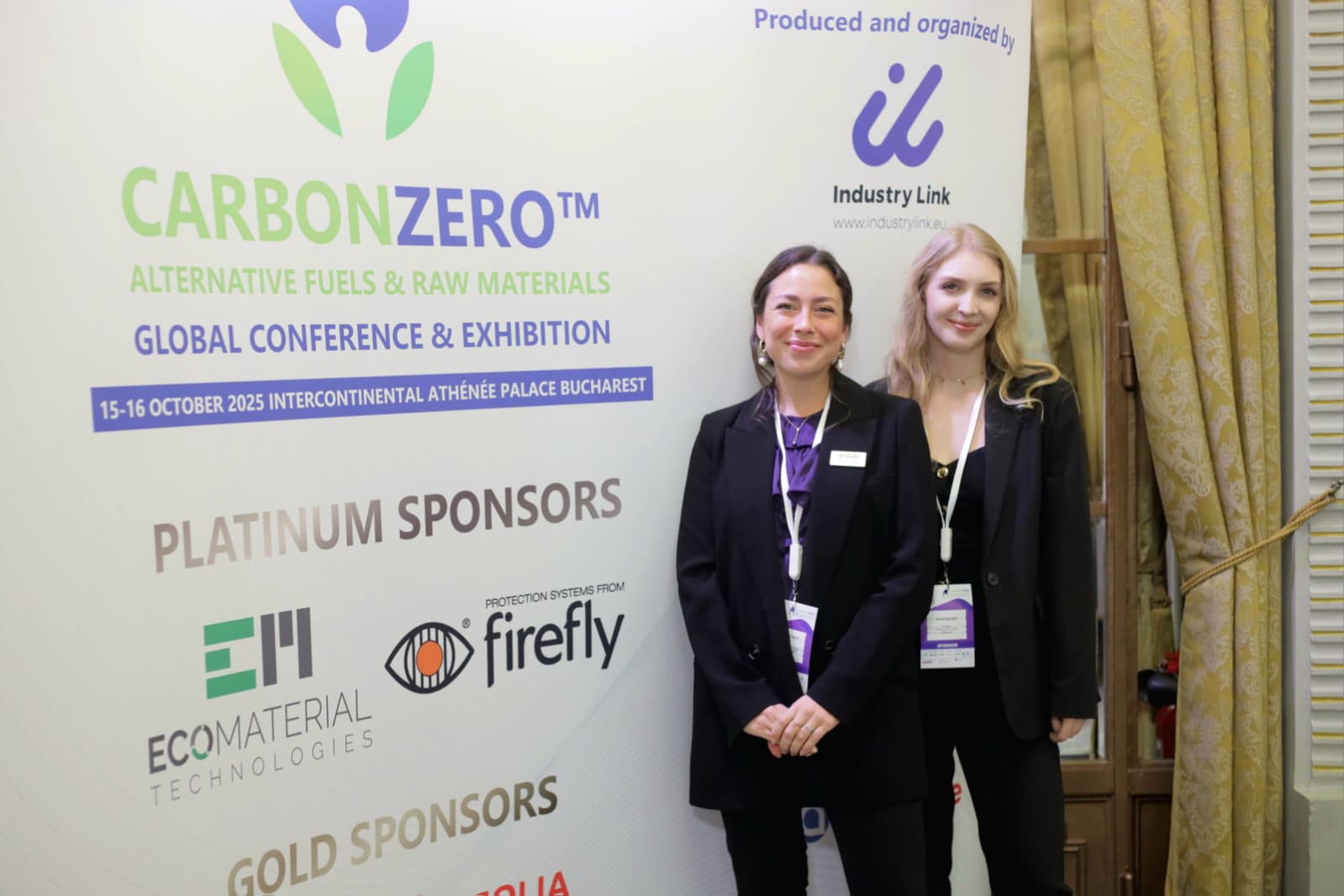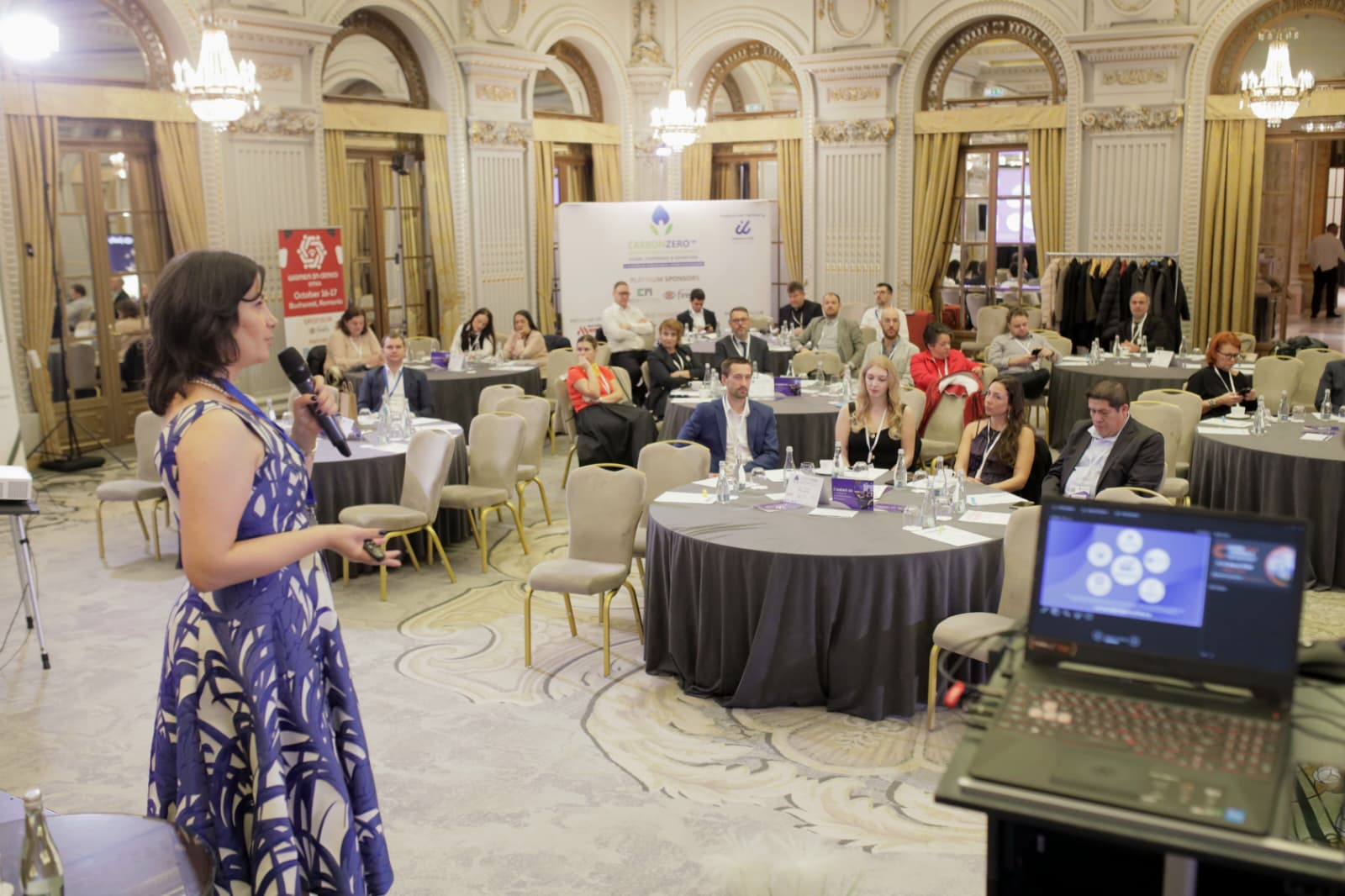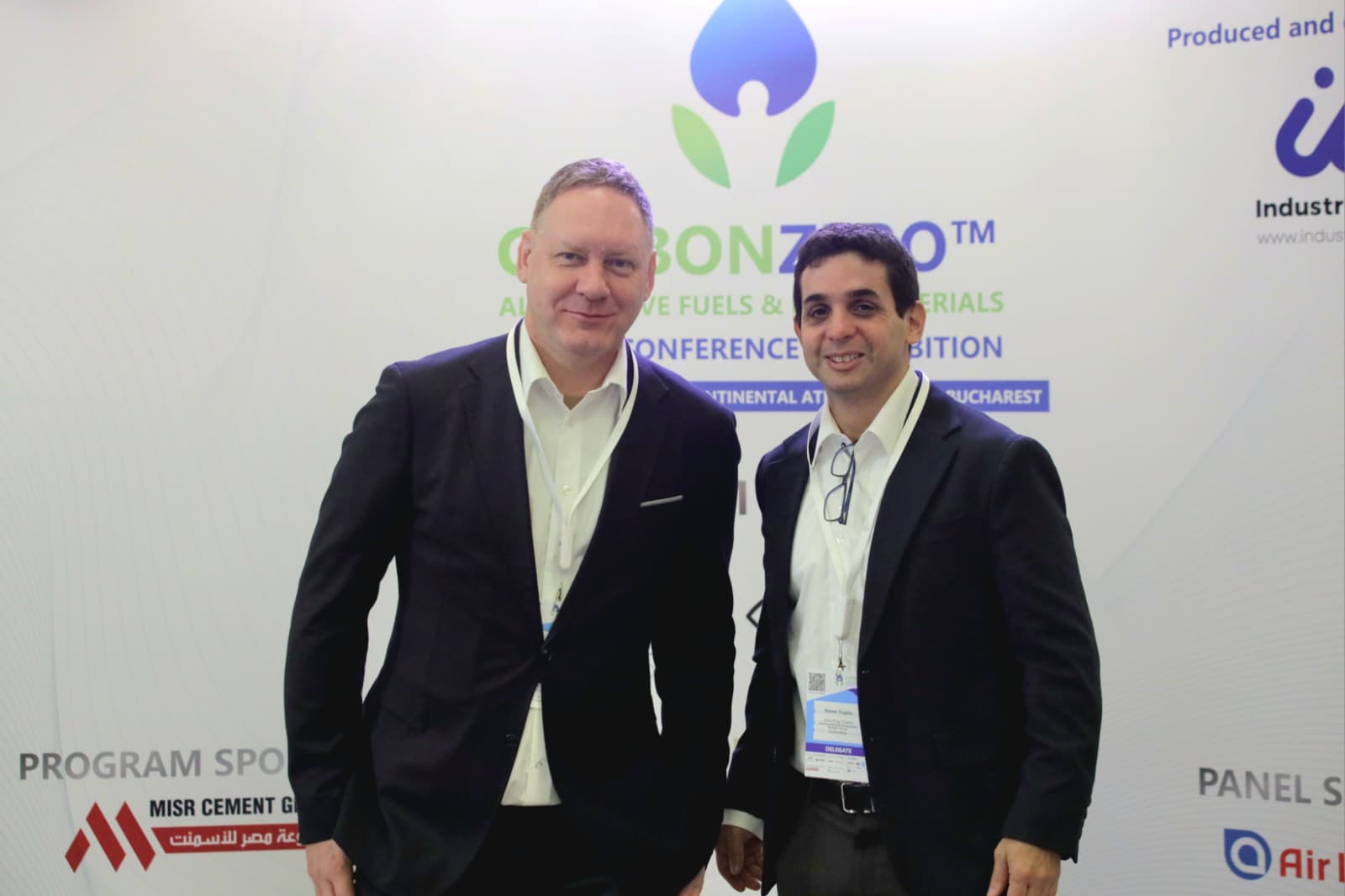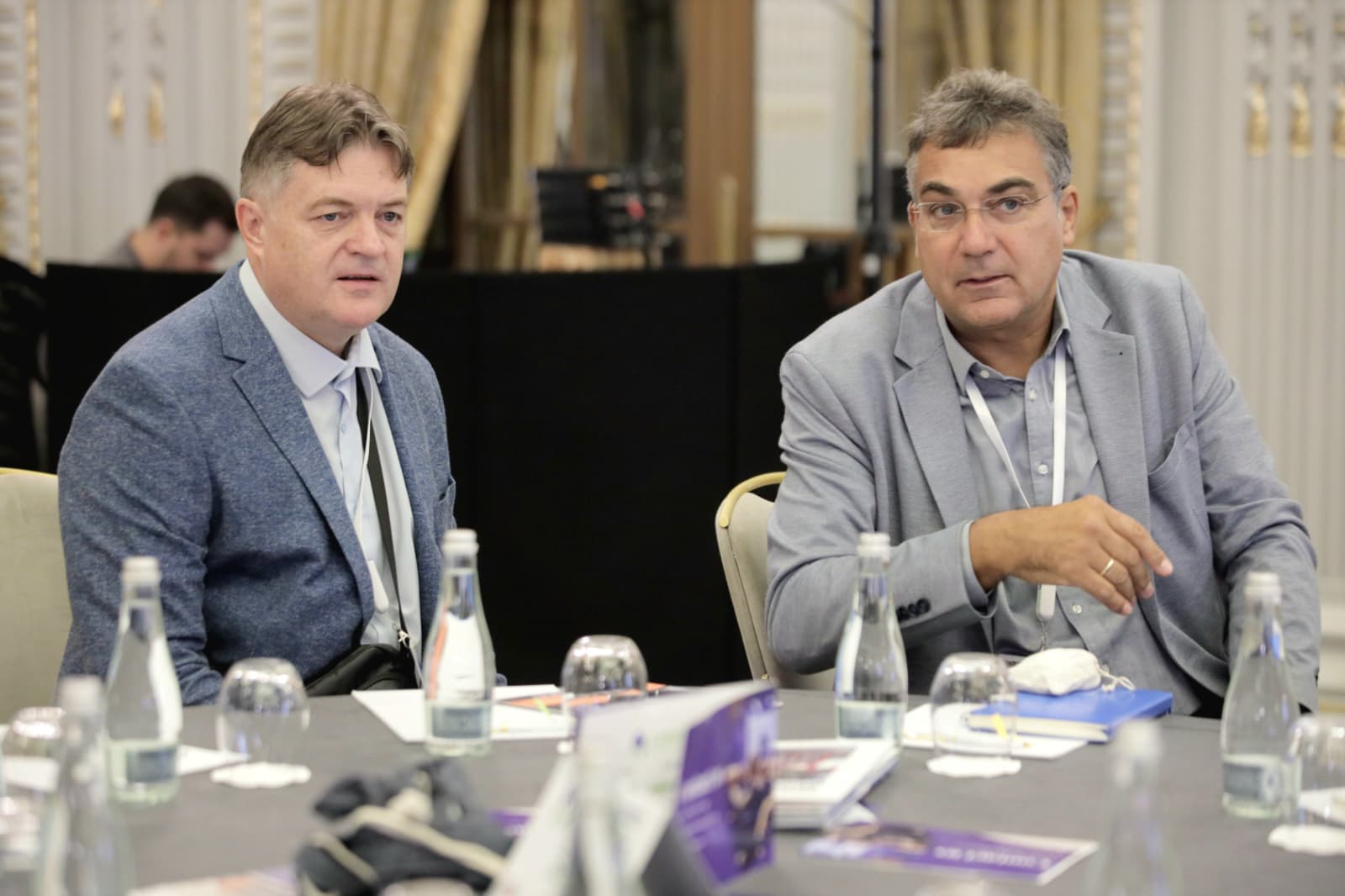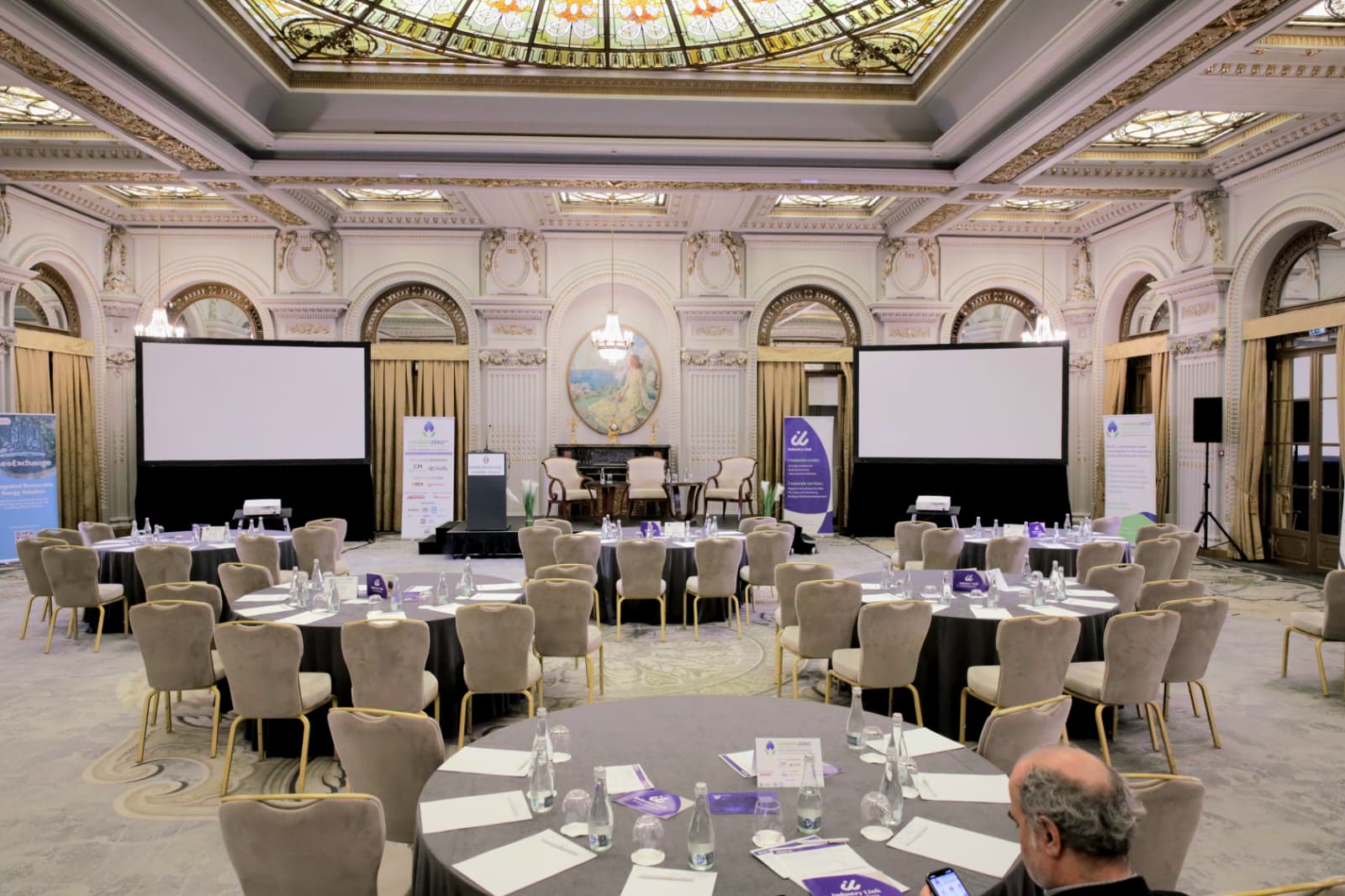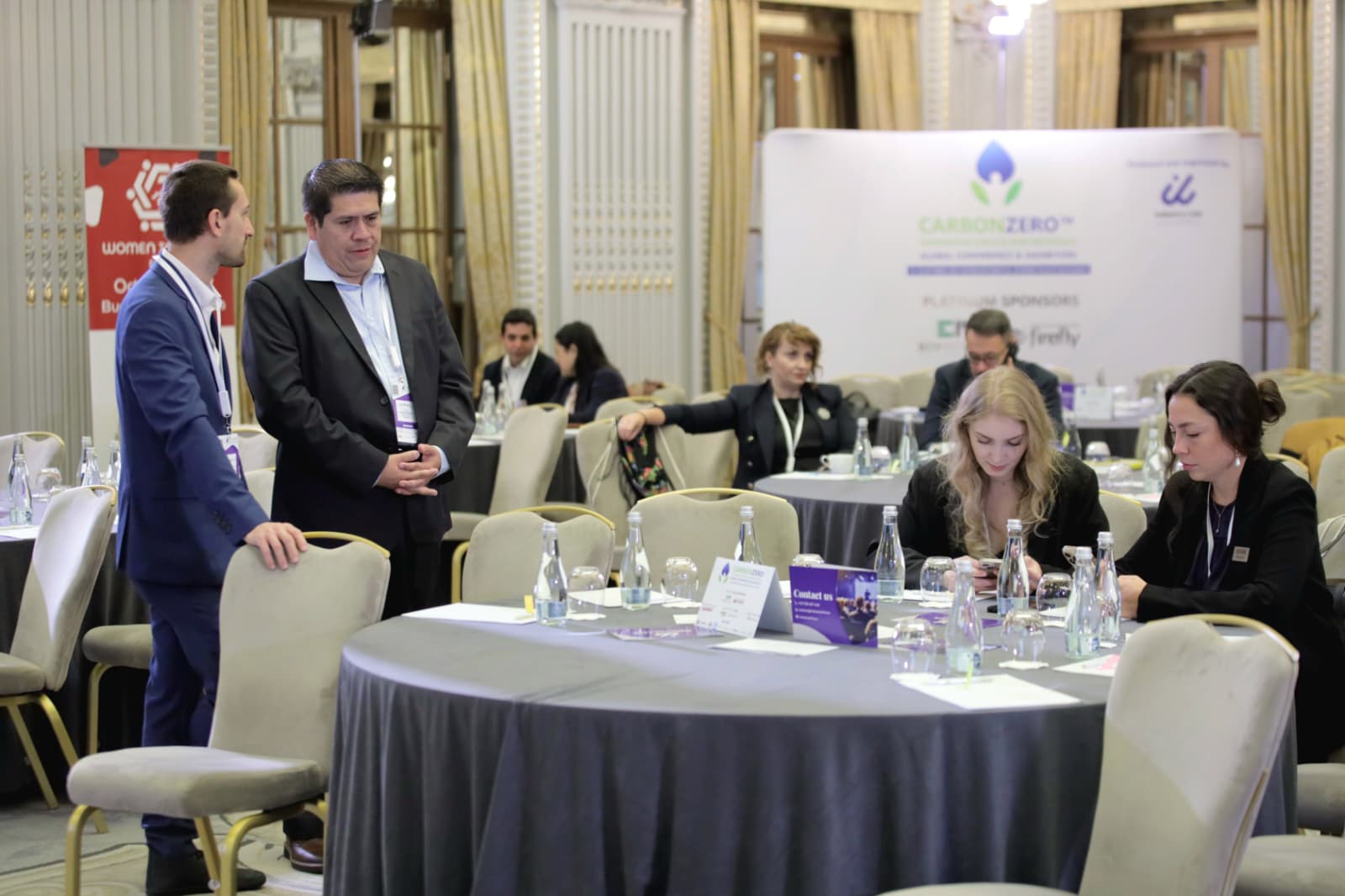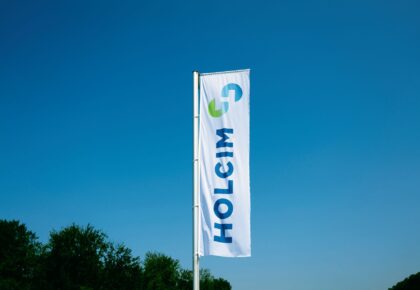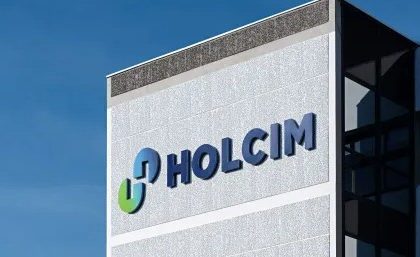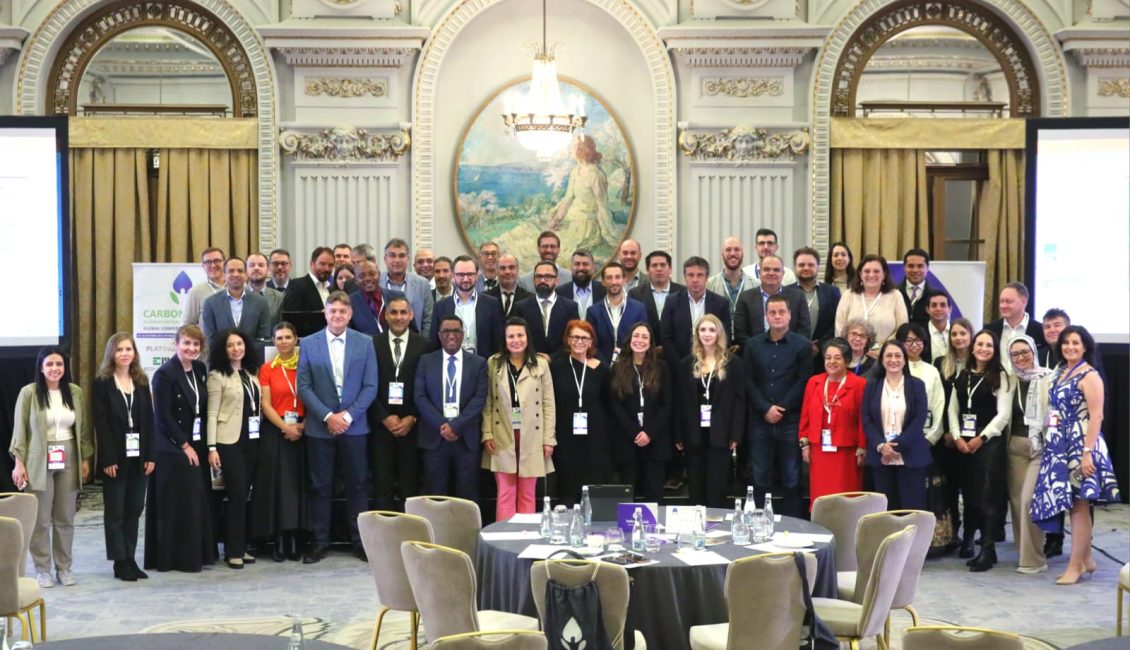
The opening day of the CarbonZero: Alternative Fuels and Raw Materials Global Conference and Exhibition 2025 brought together leaders, innovators, and experts from Europe, Africa, and beyond in the historic Le Diplomate Ballroom at the InterContinental Athénée Palace Bucharest. The event served as a global platform for exchanging knowledge and advancing the transition toward a low-carbon and resource-efficient cement and construction industry.
Strategies and Frameworks for Net-Zero Transition
The conference commenced with a welcome address by Beatrice Ene, Managing Director and Head of Events at Industry Link, who emphasized the importance of collaboration and knowledge sharing in driving sustainable industrial transformation. This was followed by an opening keynote by Firefly, underscoring the conference’s mission to accelerate the adoption of cleaner technologies and practices.
The technical discussions began with Matej Kvapil (Firefly AB), who highlighted the role of advanced fire prevention systems in reducing large-scale CO₂ emissions—demonstrating the close connection between operational safety and environmental performance.
Marco Sirotti (Bellona Europe) then presented on NetZero Pathways for European Cement, outlining the policy and technological mechanisms supporting Europe’s decarbonization objectives. His presentation set the stage for a key discussion on CBAM and the EU ETS, moderated by Marta Diez (CFP Energy) and featuring Nicolas Endress (Climease) and Luyue Tan (LSEG). The panel addressed the evolving implications of carbon pricing and regulatory frameworks, exploring how they influence competitiveness and sustainability across the industrial landscape.
Alternative Fuels, Materials, and the Circular Economy
The second session focused on alternative raw materials and circular economy solutions within the cement sector.
Paulo Mazzei (FCT Combustion) discussed color optimization and performance enhancement in calcined clays, emphasizing how material innovation contributes to both functional and aesthetic advancements.
From the African continent, Patrick Kahasha (PPC DR Congo) provided a case study on waste management and alternative fuel opportunities, illustrating the potential for developing economies to integrate circular models into cement production.
Concluding the session, Mihai Tomescu (European Environment Agency) examined renewable energy, electrification, and flexibility as core drivers of industrial competitiveness and resilience within the European Union.
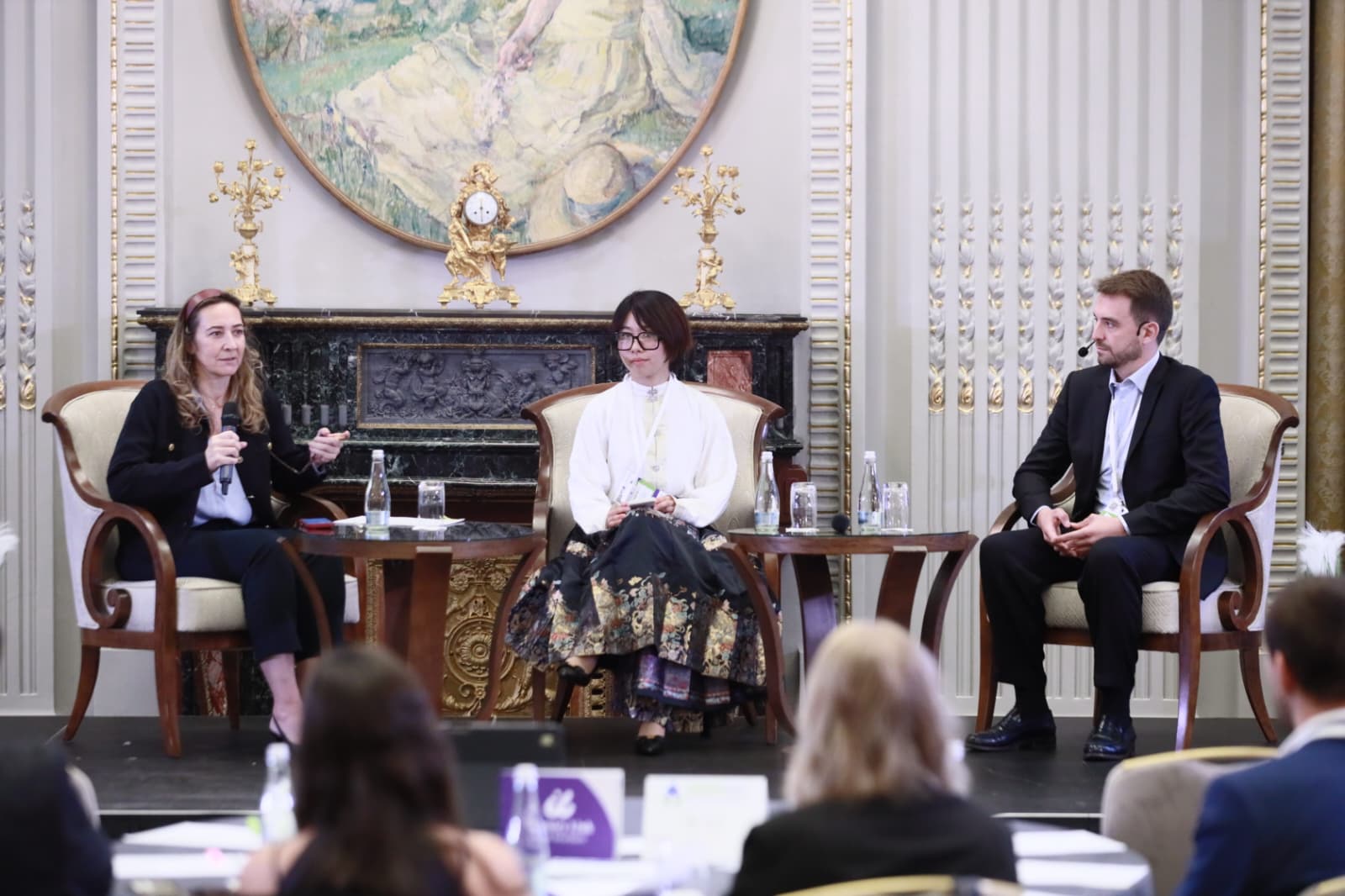
Technological Innovation and Decarbonization Pathways
The afternoon continued with a focus on innovation and technological progress. A panel moderated by Aaron Neuville (EY Germany) brought together Marcin Skowron (Air Liquide), Andreea Ionita (CRH), and Marco Sirotti (Bellona Europe) to explore the intersection of digitalization, low-carbon materials, and process efficiency in achieving net-zero cement production.
Following the discussion, Bergur Rasmussen (CCS Europe) addressed carbon capture and storage (CCS) as a critical enabler of industrial decarbonization, emphasizing the need for policy support, financing mechanisms, and cross-sector collaboration to accelerate deployment.
Mahmoud Mohsen (Misr Cement Group Egypt) then presented on AI-driven fuel quality optimization for cement kilns, demonstrating how digital tools can enhance energy efficiency and environmental performance in real time.
Global Energy Transitions and Regional Perspectives
The final session of the day examined broader energy transition dynamics and regional approaches to sustainability.
Vlad Stoicescu (Romanian Association for Sustainable Fuels) discussed renewables as the foundation of sustainable economic models, analyzing developments across Europe, China, and the hydrogen economy through the lens of the “additionality” principle.
Concluding Day 1, Sabina Strîmbovschi (Energy Policy Group) presented Decarbonising Cement in Romania: Navigating Challenges and Opportunities Toward a Net-Zero Economy, highlighting the country’s specific context within the broader European framework and reinforcing the importance of coherent policy, innovation, and stakeholder collaboration.
Outlook for Day 2
The first day of CarbonZero 2025 demonstrated the sector’s shared commitment to innovation, policy coherence, and technological advancement in pursuit of a net-zero future. From discussions on carbon markets and CCS to insights on alternative fuels and AI-driven optimization, the sessions reflected a unified vision: sustainability is both a strategic necessity and an achievable goal.
Day 2 will continue the dialogue, focusing on clinker reduction, waste heat recovery, and digital transformation — further advancing the conversation on the future of low-carbon cement and construction.
